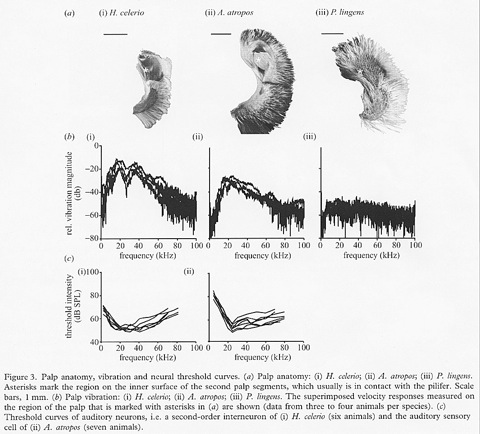The labral pilifers and the labial palps form ultrasound-sensitive hearing organs in species of two distantly related hawkmoth subtribes, the Choerocampina and the Acherontiina. Biomechanical examination now reveals that their ears represent different types of hearing organs. In hearing species of both subtribes, the labral pilifer picks up vibrations from specialized sound-receiving structures of the labial palp that are absent in non-hearing species. In Choerocampina, a thin area of cuticle serves as an auditory tympanum, whereas overlapping scales functionally replace a tympanum in Acherontiina that can hear. The tympanum of Choerocampina and the scale-plate of Acherontiina both vibrate maximally in response to ultrasonic, behaviourally relevant sounds, with the vibrations of the tympanum exceeding those of the scale plate by ca. 15 dB. This amplitude difference, however, is not reflected in the vibrations of the pilifers and the neural auditory sensitivity is similar in hearing species of both subtribes. Accordingly, morphologically different - and atympanal - but functionally equivalent hearing organs evolved independently and in parallel within a single family of moths.

Laser vibrometry for analysis of the response characteristics of the palp structures in two moths (i, ii) capable to hear echolocation calls and one deaf species (iii)

